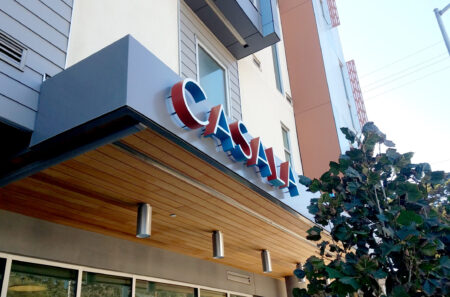
Naming Matters: How Strategic Branding Reduces Affordable Housing Bias
Affordable housing projects face a tough crowd. Mention these developments at a community meeting, and suddenly, everyone’s bracing for problems that may or may not exist. It’s ironic—developers will lose sleep over amenities and landscaping, but when it comes to the project name? That’s often a last-minute toss-in. Big mistake. The name is the likely first impression and speaks volumes to a commitment to quality and vision.
Time to Rethink the Usual Suspects
We all know the drill: “Maple View,” “Cedar Ridge,” “Sunrise Pointe.” Sure, they’re safe. But they’re also forgettable. If your project name sounds like it could double as a highway motel, you’re missing a crucial brand opportunity to create a distinct identity. Instead, think about branding with intent—grounded in the local story, geography, or purpose of the project. A former shipyard transformed into Keelhouse? That signals stability and local pride. An old rail yard called The Switchyard? Now you’ve got a sense of transformation and momentum. These aren’t just names—they’re assets that set your project apart in a crowded field.
Brand Story: From Bureaucratic to Aspirational
The difference between a bureaucratic label and a brand with vision is night and day. Creating names with meaning and intent gives residents something to rally around. Take Perennial Park, a senior living community we named that stands in the former location of a senior community that was destroyed in the 2017 Tubbs fire in Northen California. The name signals renewal and sustained life. It communicates to residents that they are important and timeless. Perennial Park will continue to support the community year in and year out.
Beyond that, integrating local language, history, or even climate—like our names West Port or Montara —elevates your project’s unique story. That story is the difference between blending in and being memorable.
Brand Perception is Value
Here’s why it matters: a strong brand doesn’t just foster resident pride. It shapes perceptions up and down the stakeholder chain. When someone says, “I live at West Port,” they’re not apologizing—they’re making a statement. That pride translates into better engagement with employers, schools, and city partners. It’s about connection, reputation and long-term value.
Stakeholders take note, too. A distinctive brand signals that this project is a long-term asset, not a quick fix. Positive perceptions drive neighborhood acceptance and ongoing support. The result? Your property becomes a point of pride.
Strategic Naming = Strategic Success
If affordable housing is going to continue to move past old stigmas, it’s time to treat naming as seriously as design or financing. Developers and architects who understand this will reap real reputational rewards and foster healthier communities.
So, skip the generic. Be deliberate. Anchor your project in a story worth telling. Strategic naming isn’t just a creative exercise—it’s a an investment in the future of the business.
Choosing the right name isn’t just a box to check. Think of it as your opening statement. Want your next project to hit the ground running? Let’s chat and make sure your brand stands out from day one.

Join Us!
Join our mailing list to receive strategies, practical advice, news and helpful resources delivered right to your inbox.

